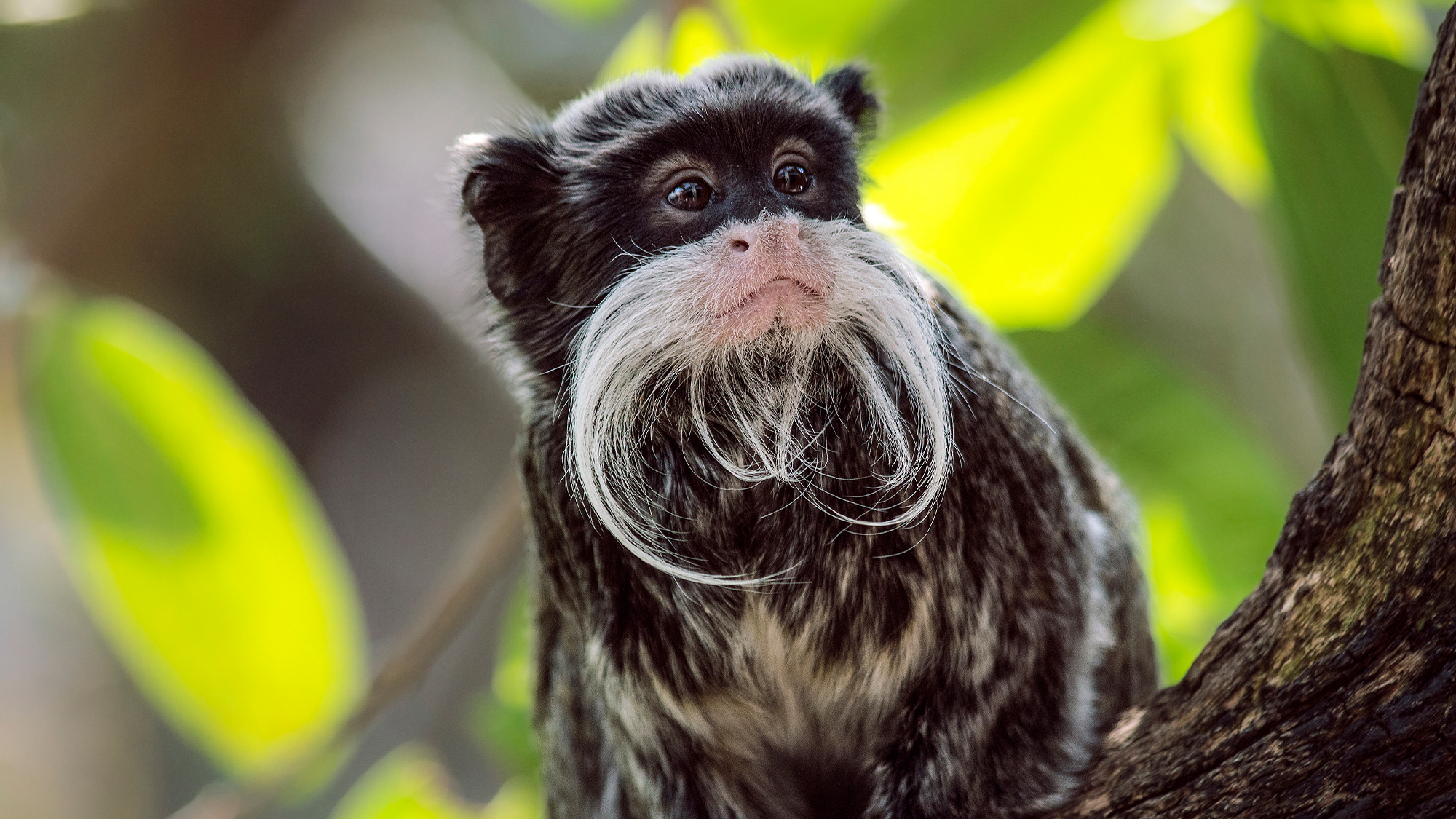

Updated 2/1/23: The monkeys were found about 15 miles away from the zoo in the closet of a private home on Tuesday, January 31. Dallas Zoo said that it is “thrilled beyond belief” and that the animals are being evaluated by veterinarians. The investigation into how the monkeys were taken is ongoing.
On Monday, Dallas Zoo announced the latest in a string of suspicious incidents at the zoo. Two emperor tamarin monkeys are missing and their habitat has been “intentionally compromised,” according to the zoo. Earlier this year, the zoo had three other suspicious incidents, involving a big cat, another monkey enclosure, and an endangered bird.
The zoo said the nine to 10 inch tall emperor tamarins would “likely stay close to home,” but they were not found in the areas close to their habitat or on other zoo grounds. The primates are native to the warm southwest Amazon Basin, with a range that includes Peru, Brazil, and Bolivia.
[Related: Zoos and aquariums have seen a dramatic shift—to the benefit of wildlife.]
The Dallas Police Department is actively investigating this and the other incidents in the zoo and they do not believe that the monkeys were taken. Since the investigation is ongoing, the zoo couldn’t provide any other information about the emperor tamarins.
The zoo is closed through Wednesday February 1 due to icy and inclement weather.
This incident is the fourth suspicious incident at Dallas Zoo this month. On January 13, a “Code Blue” was issued when a clouded leopard named Nova escaped her enclosure after police discovered it had been intentionally cut. Nova was eventually found near her original habitat after a day-long search.
The same day, staffers also noticed a similar cut in the fencing of the langur monkey habitat. All of the monkeys were accounted for and additional cameras were added to the 100+ already on hand and security patrols were increased overnight.
On January 21, one of the zoo’s endangered lappet-faced vultures named Pin was found dead. The bird had “an unusual wound and injuries” that “pointed to this not being a natural death,” according to a statement released on January 22. Dallas Police are investigating the vulture’s death as suspicious.
Ron Magill, a longtime zookeeper and communications director at Zoo Miami in Florida, told The Washington Post that these incidents have likely heightened the concerns of zookeepers across the United States who are facing decisions about animal and patron safety.
[Related: Secrets from zoo polar bears could help conservation efforts in the wild.]
“Incidents like this create the need to build more barriers between people and the animals,” Magill said. “And at the end of the day, what that does is it creates just a more obstructive cage, and we’re trying to get away from that. Anybody who thinks they might be helping an animal by releasing it from whatever habitat it was at in the Dallas Zoo is sadly mistaken.”
These incidents are not the first time that animals have escaped enclosures at the Dallas Zoo. In 2004, a 340-pound gorilla named Jabari jumped over a wall and was loose for 40 minutes, injuring three people before the animal was killed by police.
Ed Hansen, chief executive of the American Association of Zoo Keepers, told the Associated Press that he could not recall a zoo facing similar incidents with such frequency. He described the Dallas Zoo’s reputation as “excellent” and said accredited zoos have double-perimeter fencing and that a zoo as large as Dallas’ would have a security patrol.
“It appears that somebody really has an issue with the Dallas Zoo,” Hansen said.
